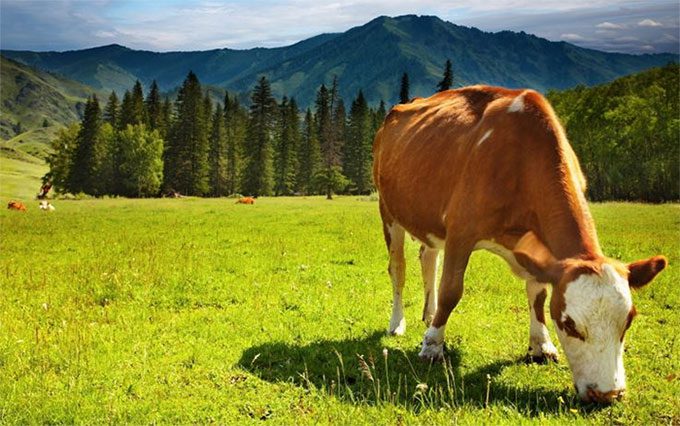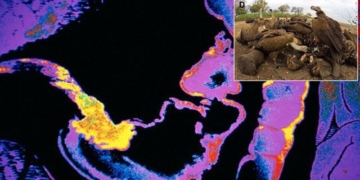Ruminant Animals Like Cows Have Developed an Unusual Digestion Process.
They consume plant material, chew it thoroughly, and then swallow the partially chewed mixture before regurgitating it multiple times to continue chewing. According to scientists, this behavior provides a clear advantage.
A research team at the University of Göttingen (Germany) has demonstrated that the regurgitated, mushy food contains significantly less grit, sand, and hard debris compared to the food that these animals initially consume.

The dental crowns of ruminants are less pronounced than those of other herbivorous animals.
This process also protects their teeth from wear during chewing. This may explain why the dental crowns of ruminants are less pronounced than those of other herbivorous species. The findings were published in the Proceedings of the National Academy of Sciences (PNAS).
The researchers fed four cows a mixture of grass and sand for several days. They then collected samples of leftover food and manure. They measured the silica content of each sample. The compounds from sand and grass are particularly abrasive to teeth due to their hardness. The manure contained a silica level equivalent to the grass-sand mixture, whereas the food regurgitated by the cows contained significantly less.
The only explanation is that silica must remain in the stomach, or more precisely, in the rumen. The rumen is the largest compartment of the stomach in ruminants. It is also where food is fermented and broken down by microorganisms.
This labor-intensive chewing process is partly performed on food residues that have been “cleaned” in the rumen. Therefore, the teeth of ruminants are less worn than those of horses. For researchers, this observation is significant because ruminants have relatively low dental bodies.
This digestive method means that teeth remain functional for a longer time. This explains the unique shape of teeth in ruminants: there is no evolutionary pressure to produce more dental material.
Professor Jurgen Hummel from the Ruminant Nutrition Group at the University of Göttingen stated: “Our research explains a fundamental yet less studied aspect of the food grinding process in large herbivores. Consequently, it contributes to understanding the function and evolution of teeth.”
Besides shedding light on the physiology of digestion, the results are also intriguing for paleontology. Specifically, well-preserved teeth in fossil form often provide the most important clues for reconstructing early herbivores and their environments.


















































